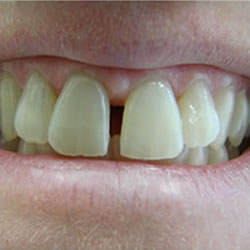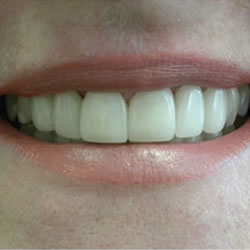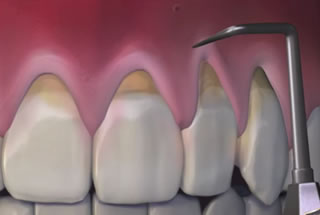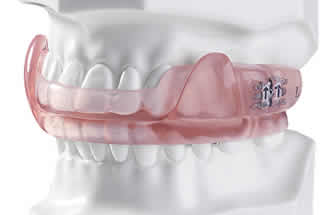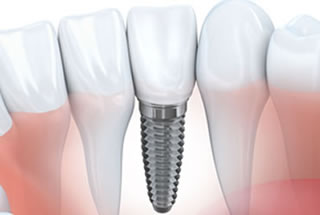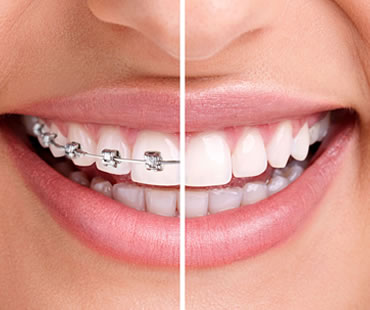
Nearly two million people worldwide have discovered Invisalign, the latest technology for improving smiles. Treatment involves wearing a series of customized clear plastic aligners to gently shift teeth into better positions. This revolutionary method is appealing to patients because it eliminates some of the aspects that people dislike about traditional orthodontic solutions.
Perhaps the most obvious benefit to Invisalign is that the aligners are invisible. The clear plastic makes the trays almost undetectable in your smile. This gives patients the confidence to smile throughout treatment instead of being embarrassed by a mouth full of metal.
You can remove your Invisalign aligners at any time. Although for best success they should be worn at least 20 hours per day, they should be removed while eating or performing oral hygiene tasks. This means that there are no diet restrictions during treatment, and maintenance is simple because it involves normal brushing and flossing.
Invisalign aligners are comfortable since there are no wires or brackets that might poke or tear your skin. They also are safer than some other orthodontic options when playing sports or other activities. Invisalign aligners gently move teeth so there is typically less pressure or pain during treatment than with traditional braces.
The aligners are customized for every patient to treat your specific issues. Different sets of aligners are provided for adults, adolescents and children, plus different sets are worn during each stage of straightening. This personalized solution means that treatment is very precise, and it is even created and monitored using special computer software to increase the accuracy of treatment. Also, many patients find that the duration of treatment is less for Invisalign. The average treatment time is often about one year, as long as you wear the aligners as recommended.
With all of the advantages that Invisalign offers, it’s easy to understand why it has become such a popular choice in orthodontic treatment. If you’re interested in seeing if Invisalign is right for you, schedule a consultation with a dental professional who is trained and qualified in providing this type of treatment.
Schedule your appointment at our Toronto dental office
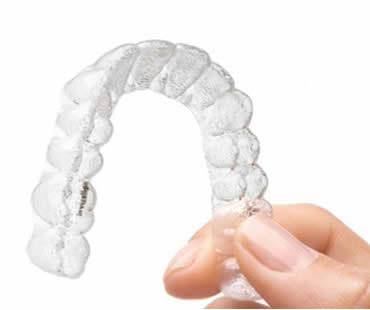
Not every smile is perfect, so many people want to improve their look through orthodontics. It’s not just a rite of passage for youth anymore; people of all ages pursue new smiles these days. A modern technology that is stylish and hassle-free has been developed called Invisalign. It provides great results without impacting your life as much as traditional braces.
The first step is choosing a dental professional who offers Invisalign treatment, since not every provider is trained and qualified in this approach. Once you find the right professional, the dentist will assess your mouth and determine if you’re a good candidate. With the exception of severe misalignment, most people can benefit from Invisalign.
To get started, your dentist will take teeth impressions and X-rays to create a 3D image of your mouth. That helps determine your treatment plan, how long you can expect the process to last, and allow you to see your teeth at each stage. Being able to see the final outcome is a great advantage of Invisalign.
Clear plastic aligners will be customized for your teeth. They are hardly noticeable in your smile and won’t cause irritation or discomfort. You’ll be instructed to wear them for 22 hours a day for a couple of weeks as they gently move your teeth into better positions, after which you’ll switch to a new set of aligners in the series. The trays are removed for cleaning and eating, making them much simpler than traditional braces. Your normal oral hygiene routine isn’t impacted, as you can continue brushing and flossing as usual without the appliance in your mouth. Many patients also rave about the fact that their diets do not need to change; there are no restrictions with Invisalign.
A checkup with your dentist is needed every 4-6 weeks to monitor your progress. It usually takes from 12-18 months to complete Invisalign treatment. With proper wear, you’ll end up with a beautiful smile without having to suffer through the common complaints of orthodontics.
If you live in the Toronto area contact us today

Having a smile that embarrasses you is not a good way to go through life. With so many options available for improving the way your teeth look, there’s no reason to continue trying to hide them. One of the best options available today is Invisalign, or invisible braces. This innovative technology may be able to help you transform your smile without the hassles of traditional orthodontics.
Invisalign consists of a series of clear plastic aligning trays that gently shift your teeth into better positions. Practically invisible when worn, these aligners are removable for eating and cleaning. No dealing with a mouthful of unsightly metal, avoiding restricted foods, or worrying about food becoming stuck in your braces.
What types of problems can Invisalign correct? Some common flaws include gaps between teeth, crowded teeth, overlapping teeth, mild malocclusions, or twisted teeth. Issues like these not only impact the appearance of your smile, but can also cause oral health complications such as difficulty in cleaning or improper wearing on your teeth.
Who should consider Invisalign? Anyone with teeth problems like those above is likely a good candidate, especially those who want to make the best impressions on others in their professional and personal lives. If you want to repair your smile without wearing traditional braces and have the choice of removing your orthodontics for special occasions, then you’ll find Invisalign very appealing. This applies to patients of many ages, from adults in the working world to self-conscious teens. Invisalign is a great solution for those who play sports or play musical instruments that might be hindered by traditional braces.
If you are unhappy with your smile, schedule a consultation with a professional who offers Invisalign as a treatment option. Find out if this treatment can help you, and begin your journey to a brand new beautiful smile.
Our dental office is located in Toronto

One of the most recent innovations in modern orthodontics is Invisalign. These unique clear aligners are becoming increasingly popular for improving smiles without the stigma associated with traditional braces. Invisalign aligners straighten teeth by placing gentle pressure on them to move into better positions. This solution offers distinct advantages to some of the other options in orthodontics.
Hidden appearance:
One of the most obvious benefits of Invisalign is that the clear plastic is practically invisible in your mouth. The subtle appearance of the retainers is much less obtrusive than traditional metal braces. For patients who want to diminish the fact that they are undergoing orthodontic treatment, Invisalign in the perfect solution. Personal and professional relationships are not at risk of embarrassment due to being self-conscious about your smile.
Easy removal:
You will remove aligners from your mouth when eating or performing oral hygiene tasks. There are no impacts to your diet during Invisalign treatment, since you take out the aligners anytime you eat. Brushing and flossing are performed normally without having to worry about cleaning food debris out of intrusive wires and brackets. This can have positive impacts on your oral health as well.
Increased comfort:
The lack of metal pieces in the aligners means a more comfortable experience. Traditional braces have a reputation for poking the mouth or breaking. Invisalign offers a clear advantage of being very comfortable when worn.
Boosted confidence:
No matter if you are a teenager or an adult wearing braces, it can be embarrassing to have a mouth full of metal in your smile. The invisible quality of Invisalign eliminates those self-conscious feelings, giving you the confidence to smile, laugh and eat as usual even while undergoing treatment.
If these benefits of Invisalign sound appealing to you, schedule an appointment with a qualified orthodontist who provides this type of treatment. It may be the winning route to your beautiful smile.
We look forward to seeing you in our Toronto dental office
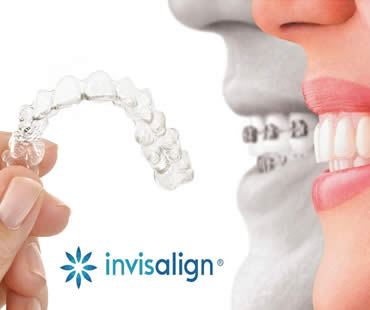
Straighter teeth are possible through traditional metal braces or Invisalign clear aligners, but how do you know which are right for you? These two types of orthodontics work differently to improve smiles. Invisalign uses invisible removable plastic aligners to gradually shift teeth, while metal braces require brackets bonded to the teeth and arch wires to apply pressure to move the teeth.
If you are deciding between these two types of treatment, ask yourself some questions to help you choose:
- How severe is your case? Moderate conditions like overcrowding, gaps, and overbite or underbite issues can be treated with either option. However, more severe cases like malocclusions, jaw problems, crossbites, or seriously crooked teeth may require metal braces for more effective results.
- Do you care if others see your braces? Metal braces are very noticeable and bulky, while Invisalign is virtually invisible in your smile. Adults and self-conscious teens may prefer the concept of hidden orthodontic treatment.
- Will you be diligent in wearing aligners? They should be worn at least 22 hours each day for best results, so neglecting to wear them consistently can negatively impact your smile or require longer treatment time.
- Are you concerned about keeping your teeth clean? Metal braces can be difficult to clean because food becomes caught in the wires and brushing may not easily reach all areas. Since Invisalign trays are removable, brushing and flossing are performed normally throughout the process.
- Are you worried about teeth stains? Since it’s easier to keep teeth clean with Invisalign, you avoid the risks of stains from food and plaque buildup around metal braces that may stain your teeth.
- How often do you want to visit the orthodontist? Metal braces require office visits at least every 4 weeks for tightenings. Invisalign trays are changed every 2 weeks, but many orthodontists provide a series of trays to take home so that an office visit isn’t required each time. It’s possible that you may not visit the orthodontist as often with Invisalign.
The ideal choice for your orthodontic treatment can be decided by consulting with your orthodontist. Find out which option will best transform your smile.
We look forward to seeing you in our Toronto dental office
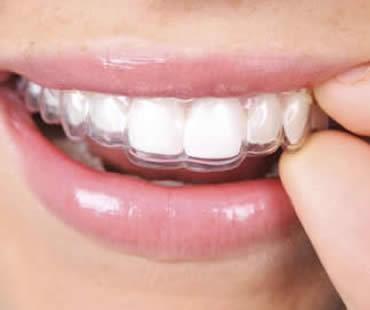
The innovative approach to improving smiles through Invisalign has paved the way for beautiful smiles for people of all ages. Not just for children and teenagers, Invisalign appeals to adults all the way through to retirement ages. It’s never too late to transform your smile and regain your self-esteem when you have the option of Invisalign.
What types of problems does Invisalign address? In addition to simply straightening the teeth to achieve a more perfect smile, dental problems like gaps, overcrowding, overbites, underbites, open bites and cross bites can all be improved.
The process involves wearing customized invisible plastic aligners over your teeth. New aligner trays are provided every few weeks during treatment as your teeth gently move to their improved positions. The aligners are removable for easy dental hygiene, since normal brushing and flossing are possible instead of dealing with cumbersome wires and brackets. The clear plastic trays are nearly invisible in your smile, hugging your teeth securely allowing for no embarrassing slips or speech impacts.
Invisalign is possible for just about anyone with permanent teeth and healthy gums. Older patients are often at higher risk for gum issues, so correcting crooked teeth or overlaps is especially beneficial to help those patients avoid gum problems related to gaps or inability to clean teeth properly. Correcting misalignments can also prevent jaw or joint pain in the mouth, head, and neck area.
Patients over the age of 50 are seeking orthodontic treatment more than ever. As they age, many people want to avoid dentures when possible and Invisalign can provide a great option for making smiles look more appealing while also improving oral health. A beautiful smile can also improve your outlook on life, making you look and feel younger. An attractive smile positively impacts your overall attitude and appearance, and it’s possible with the help of Invisalign.
Our dental office is located in Toronto







 E-Mail Us
E-Mail Us  416-595-5490
416-595-5490